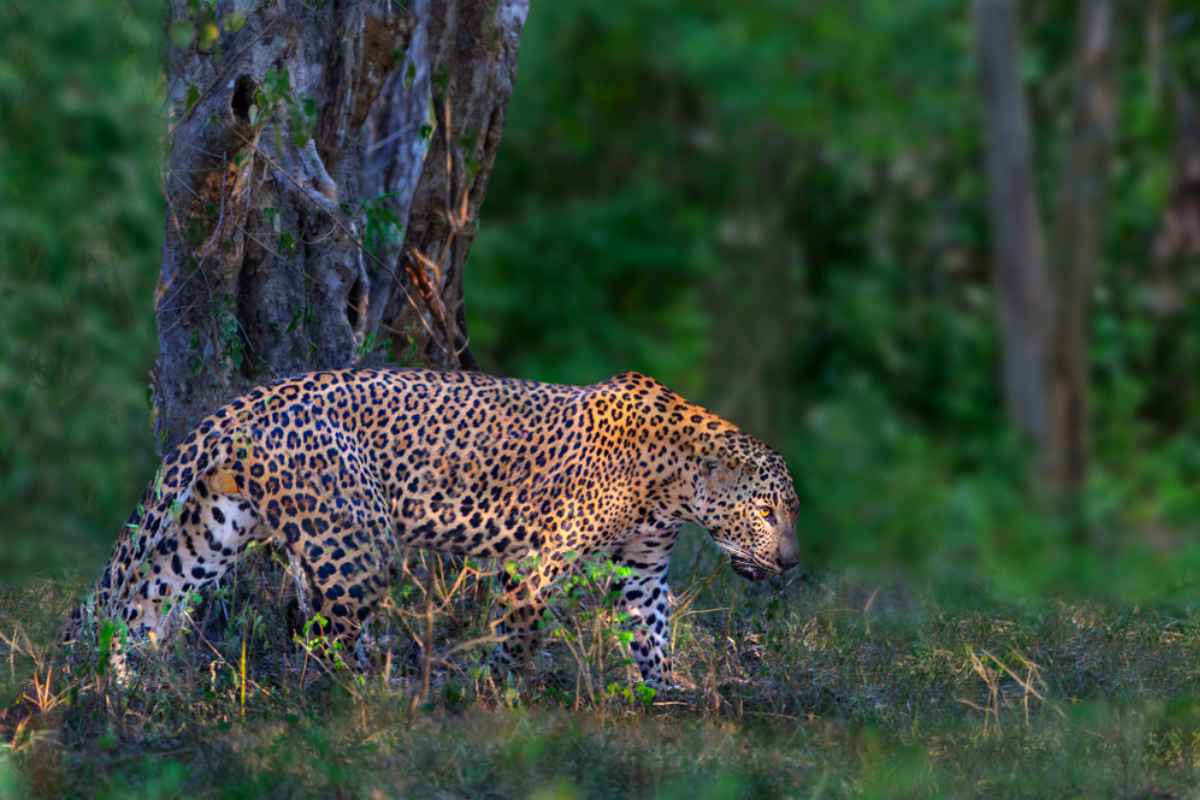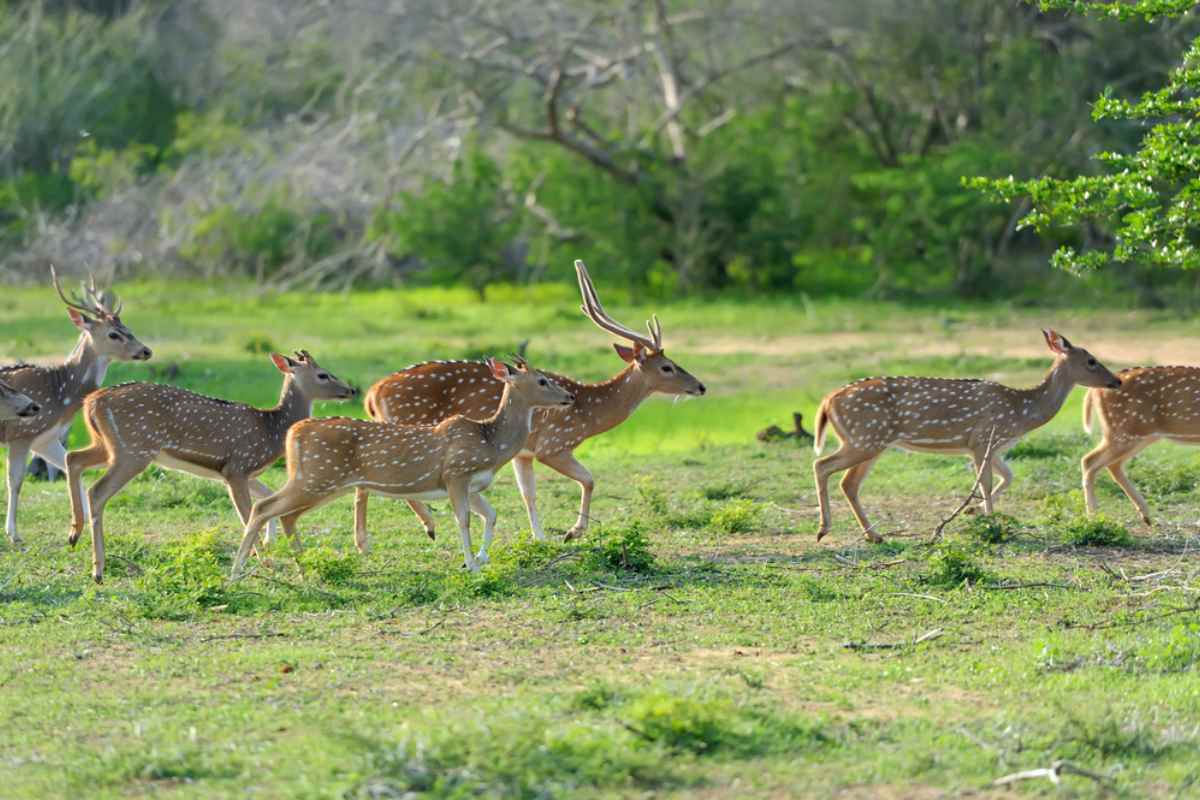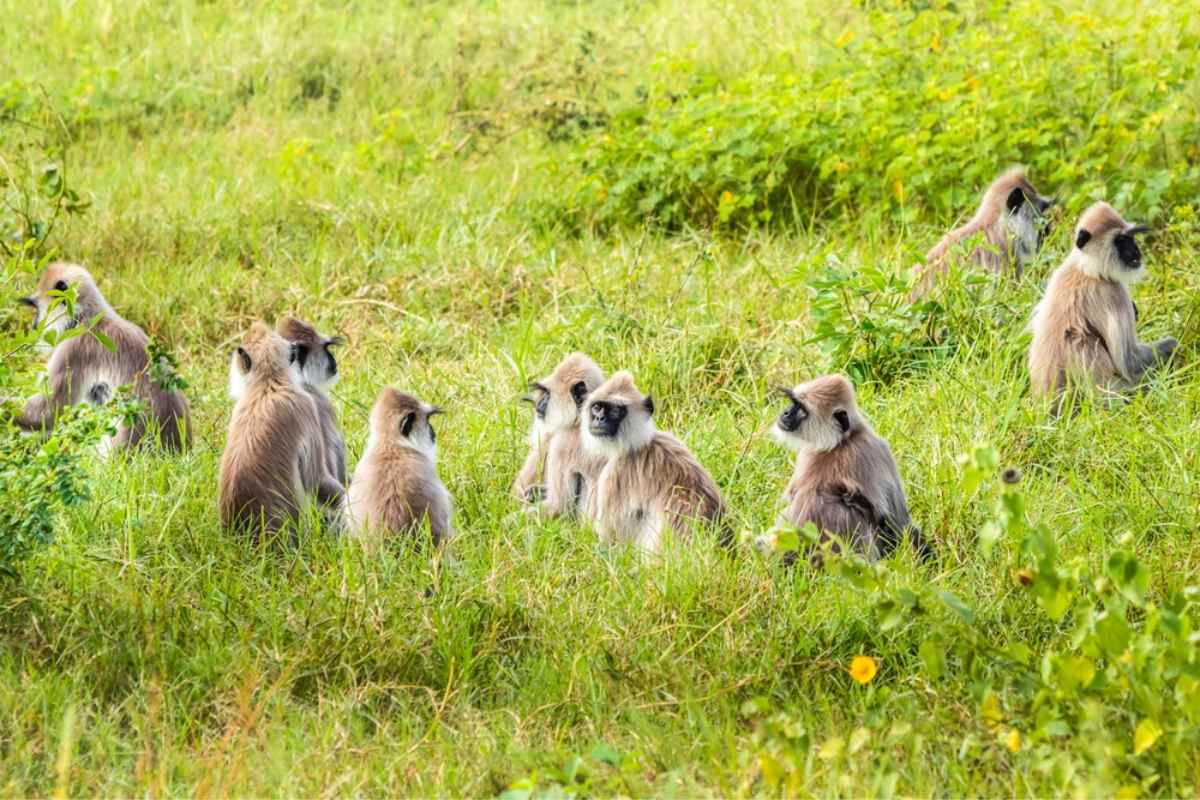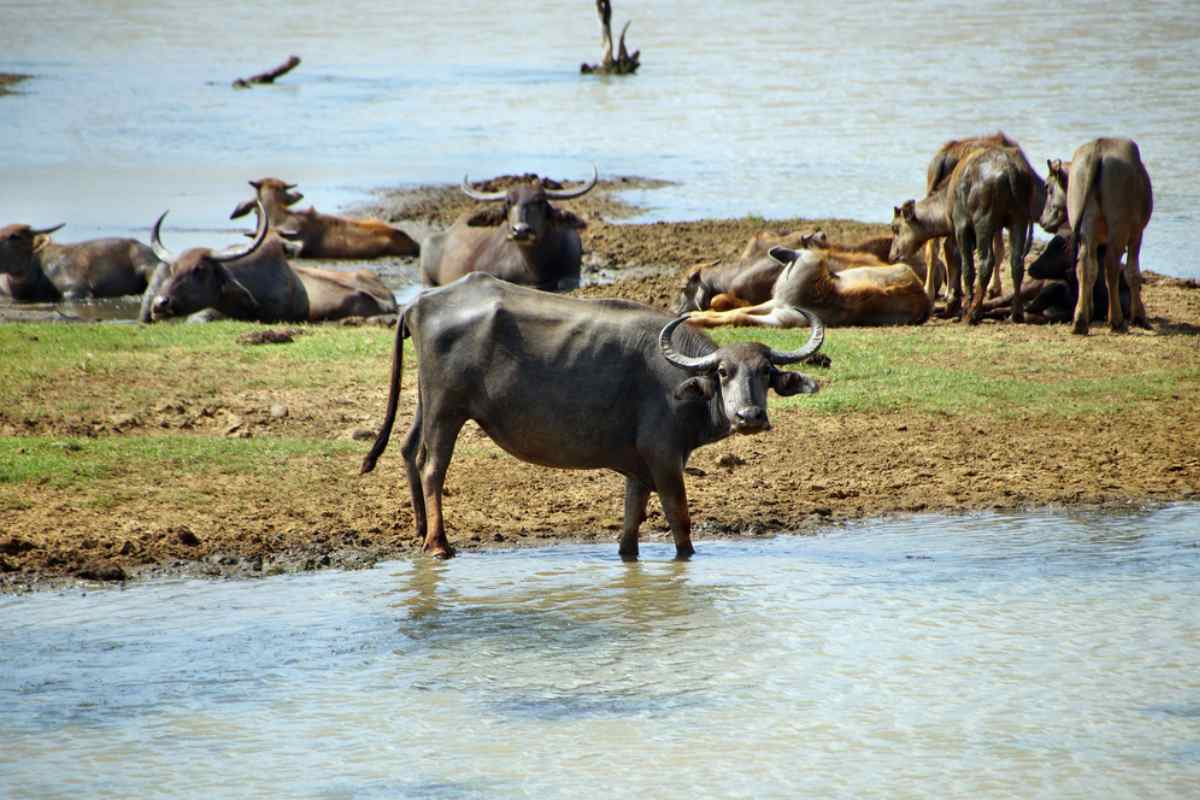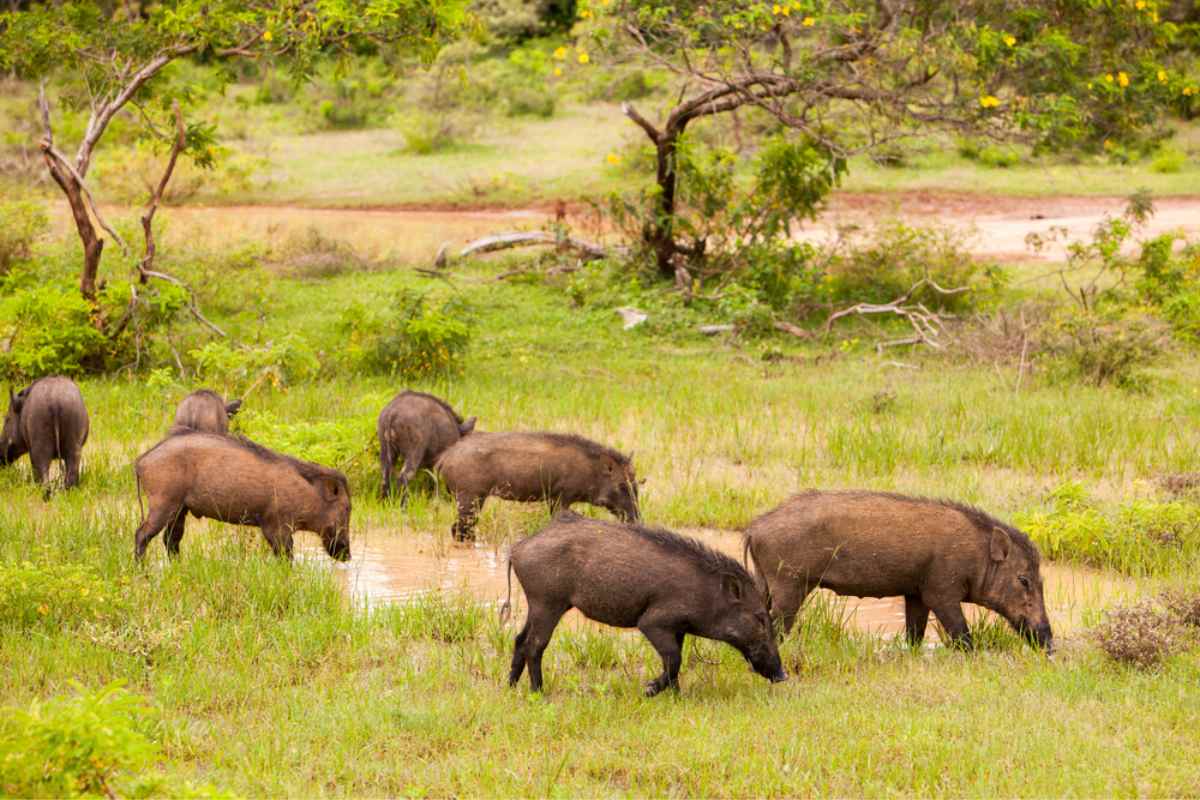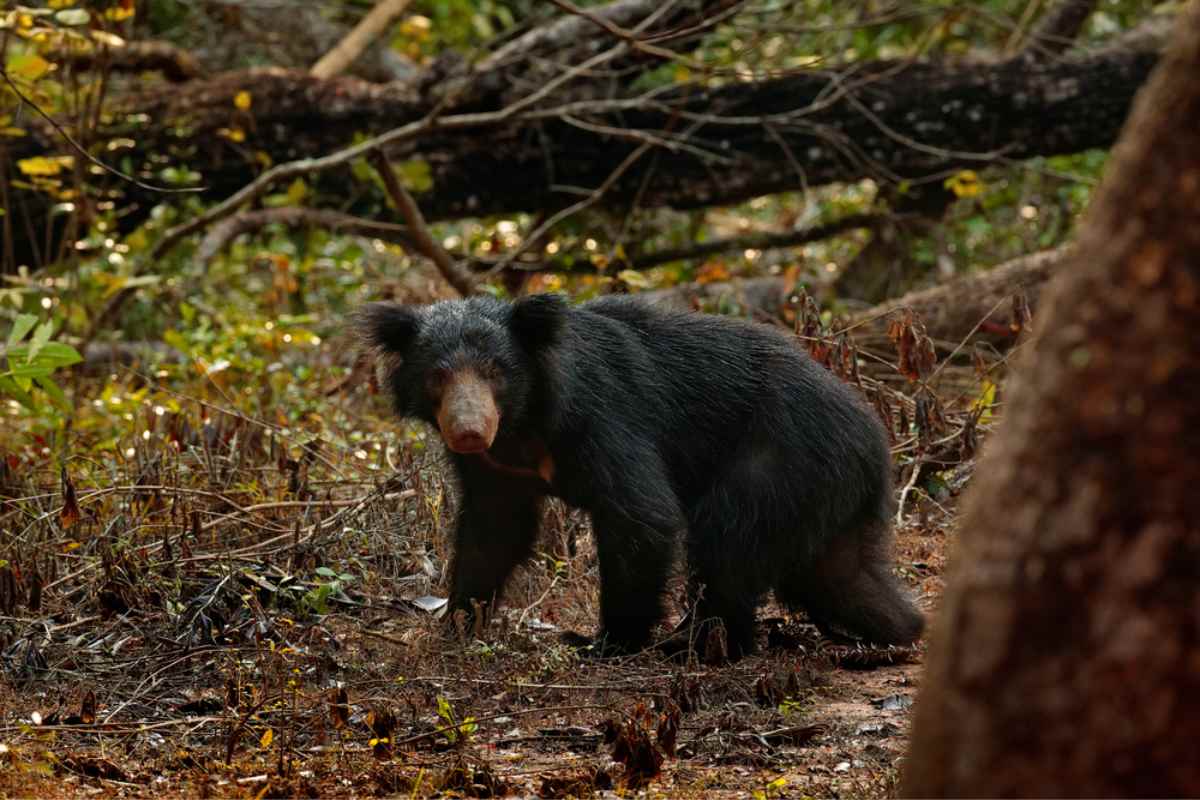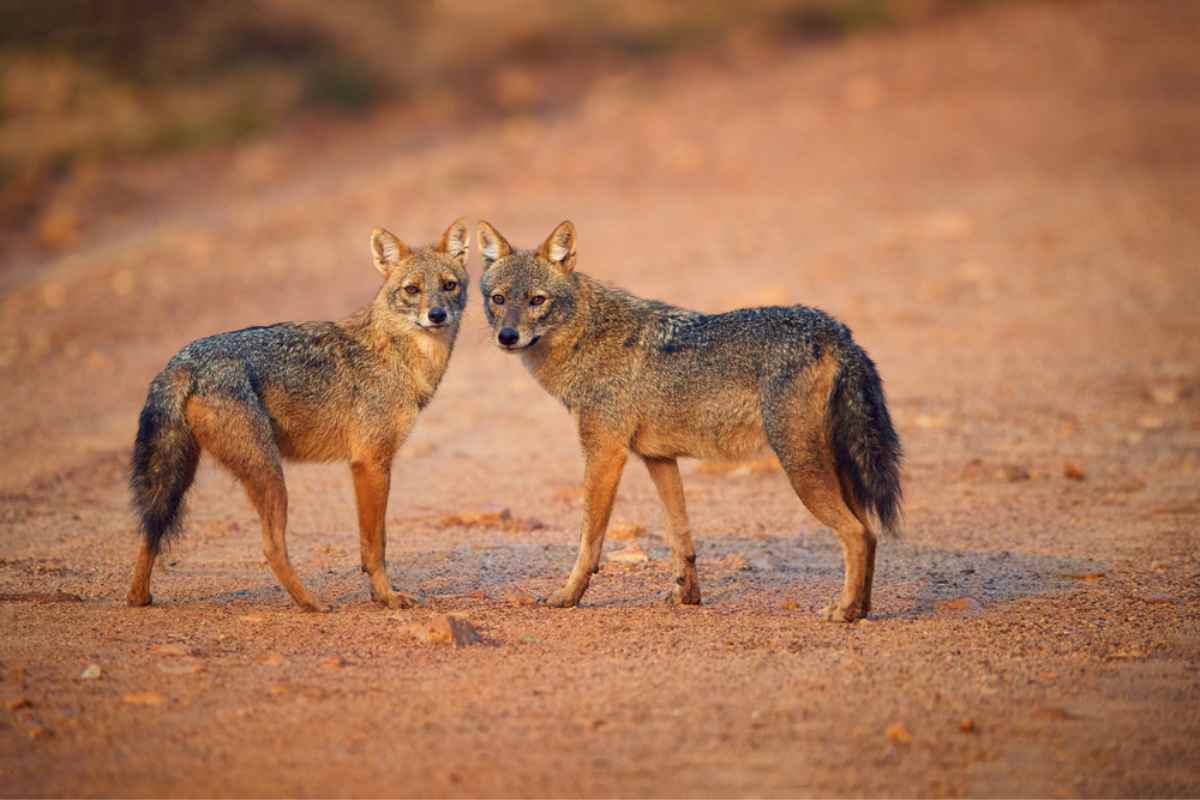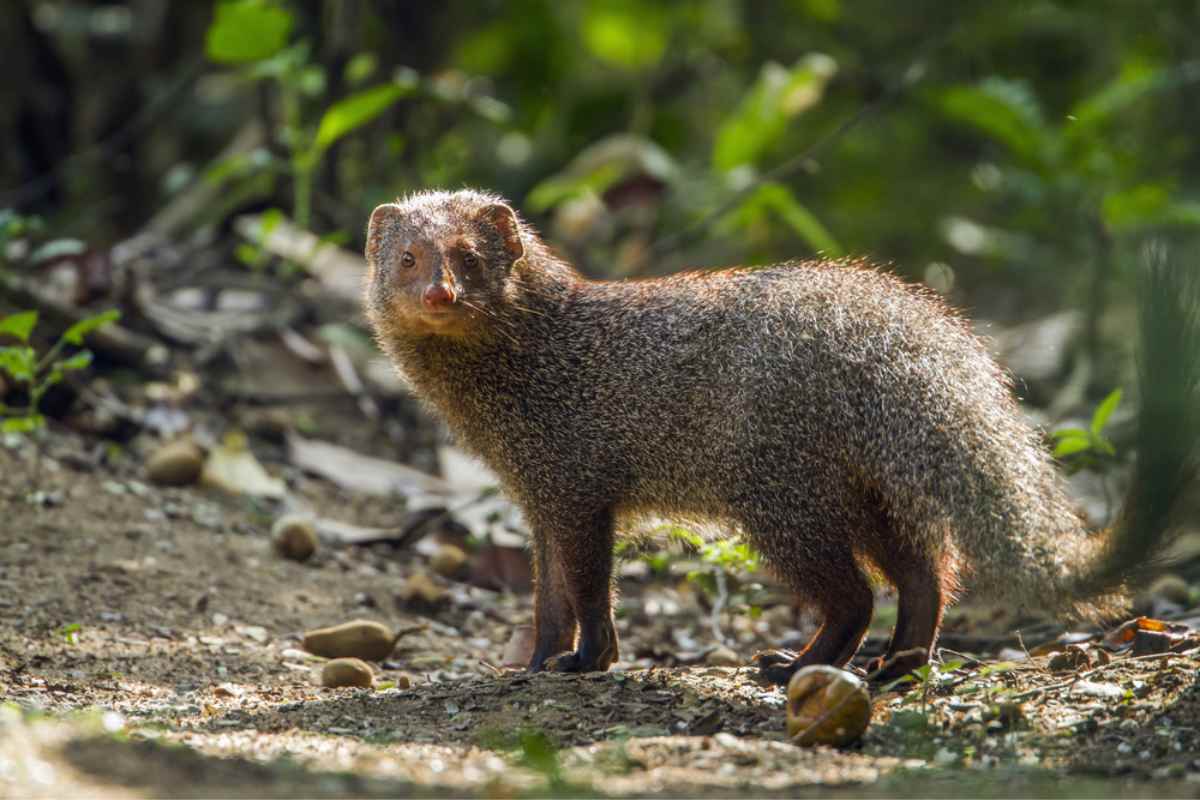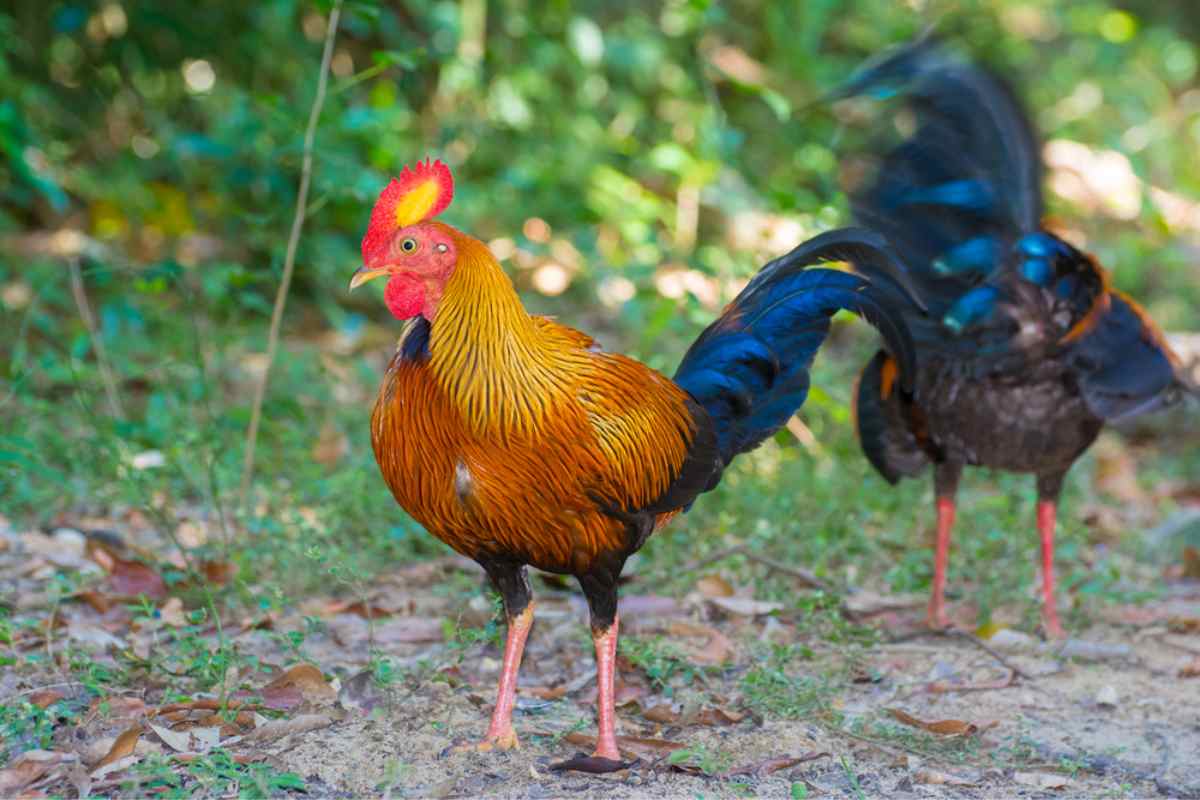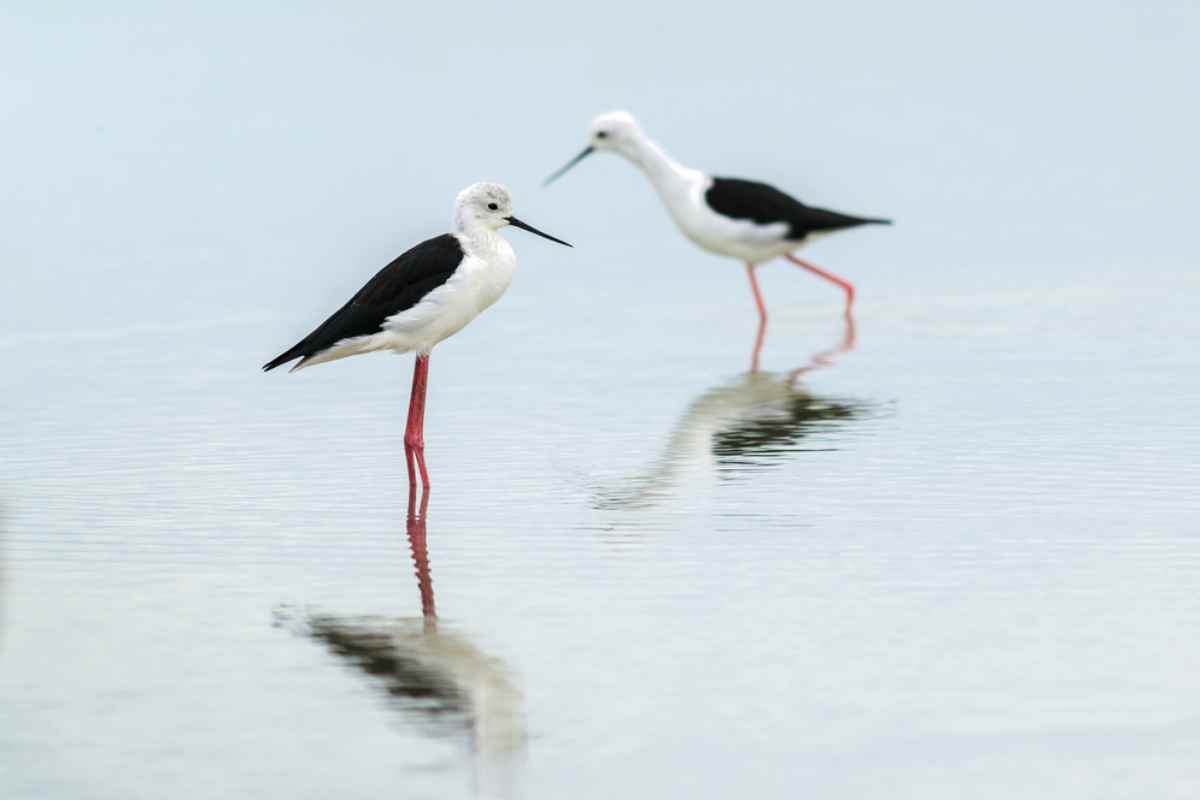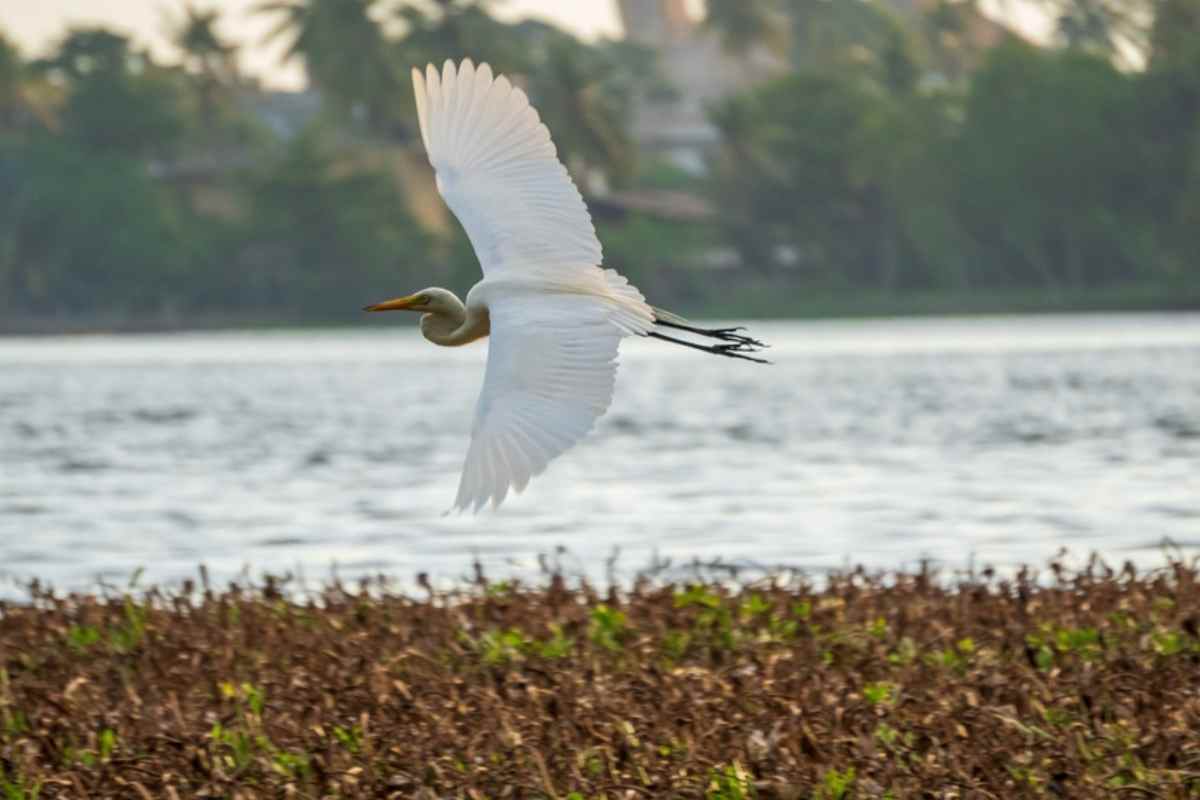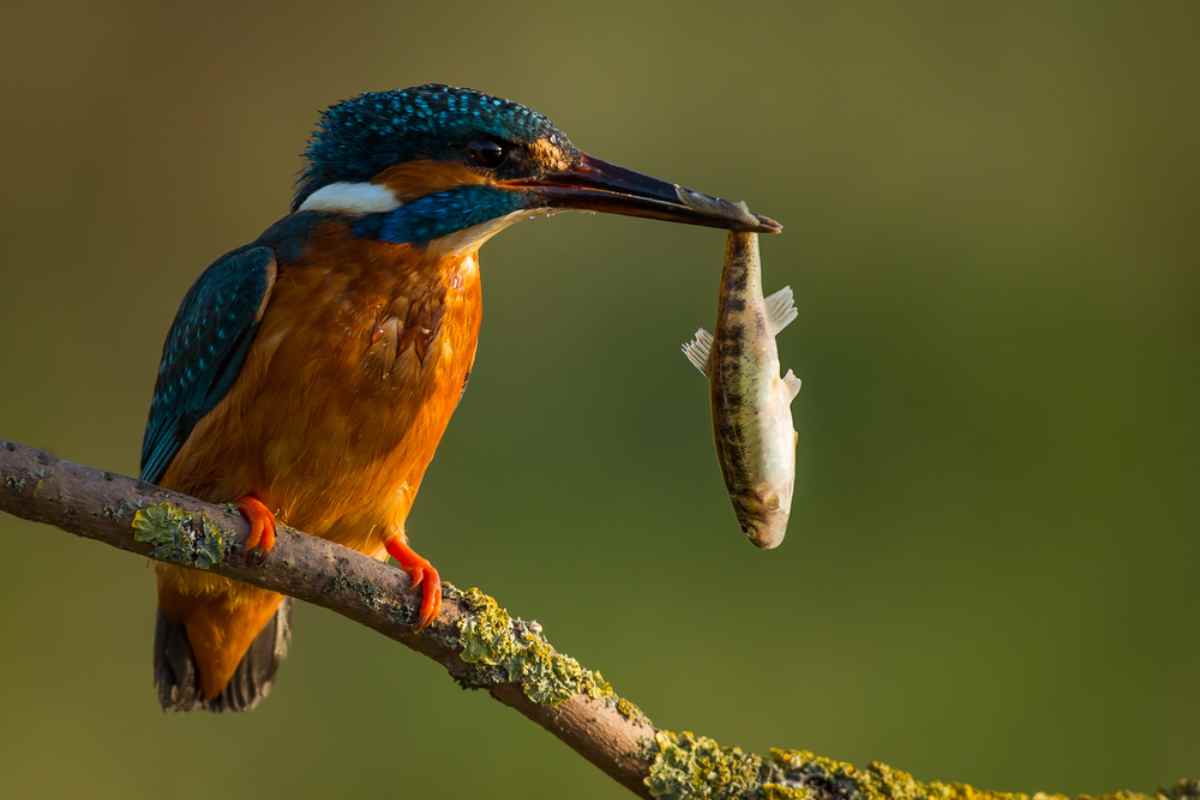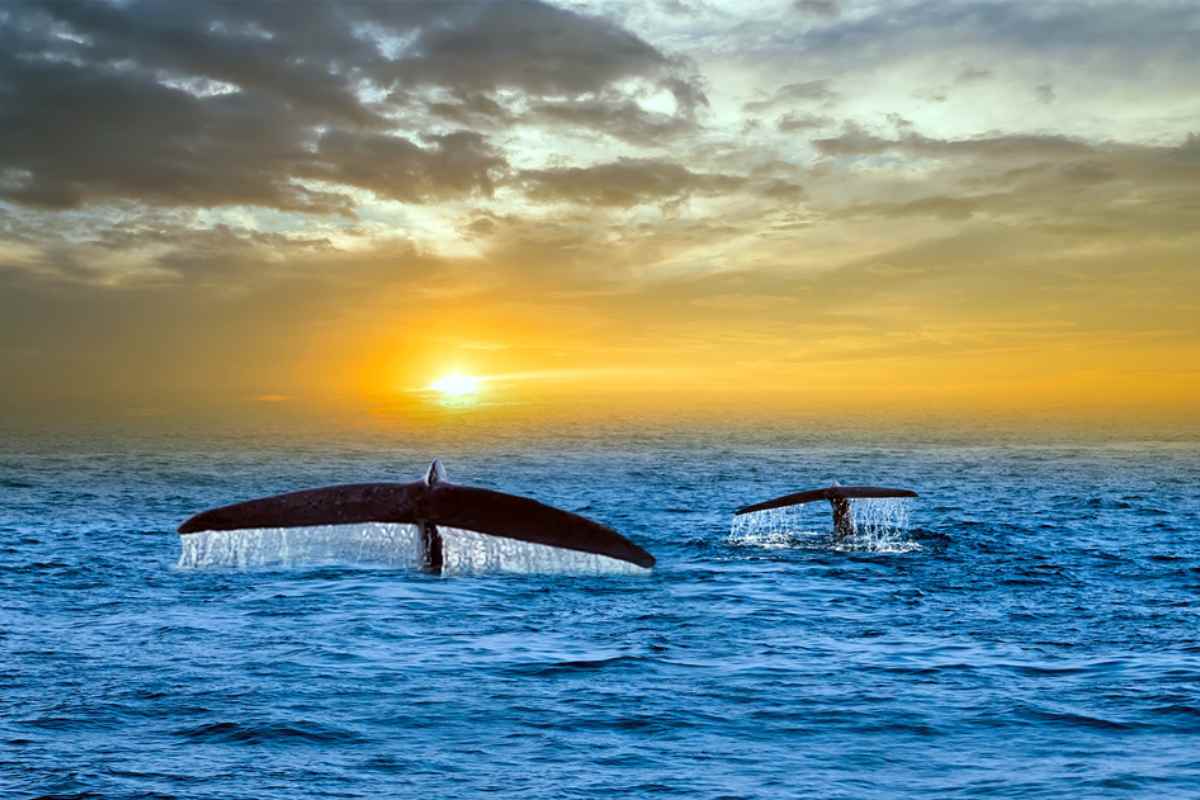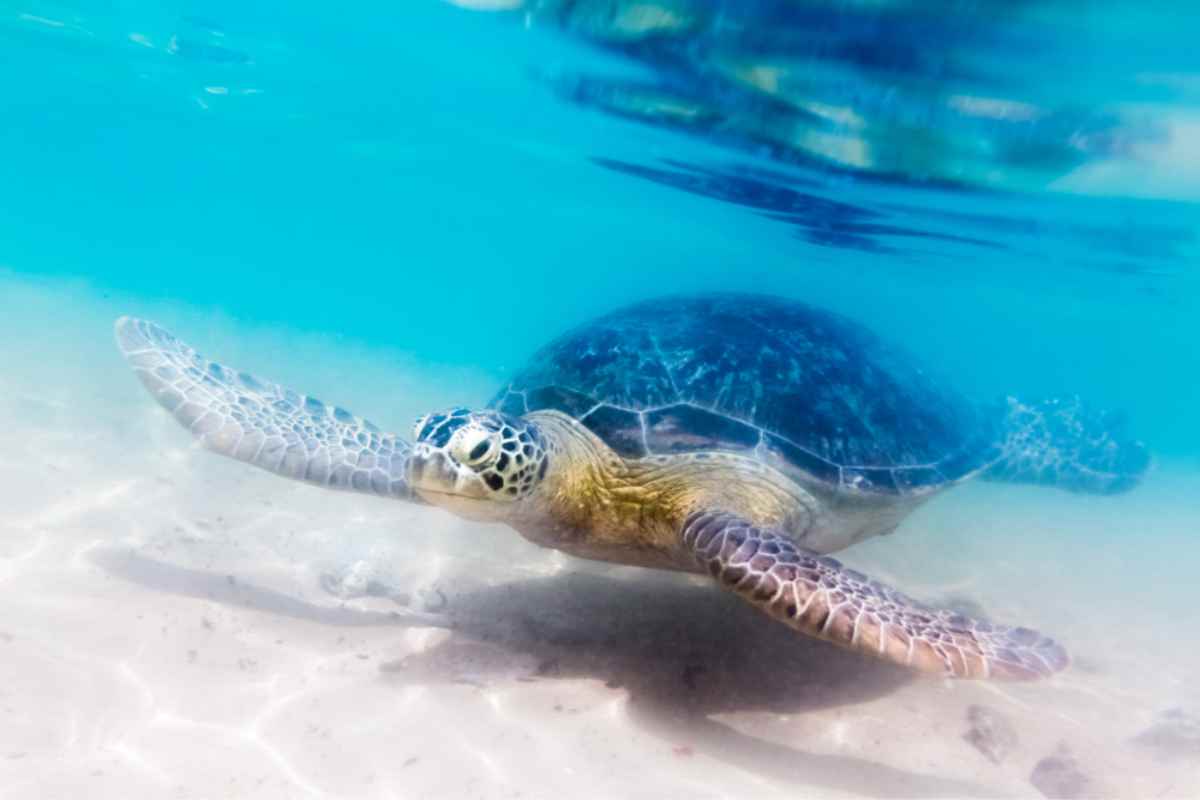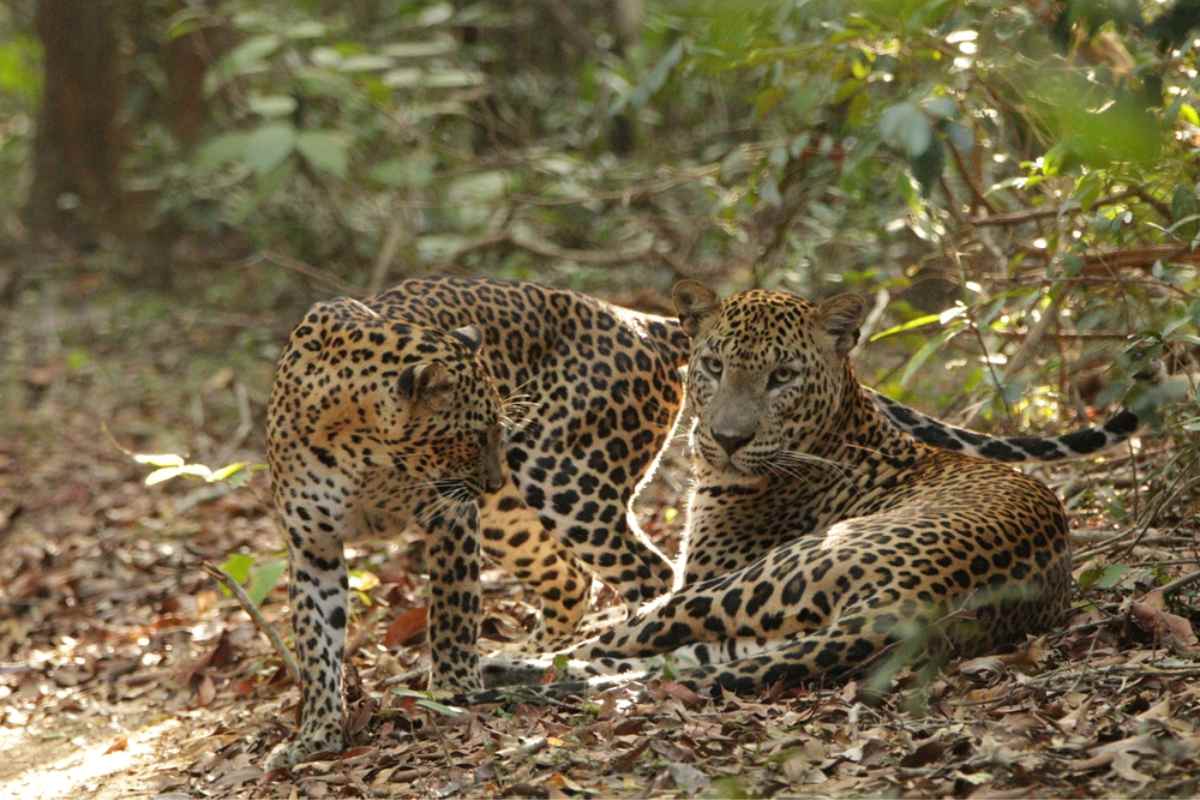
Embark on a voyage through the dense landscapes of Sri Lanka, where a treasure trove of wildlife awaits. Sri Lanka, an island teeming with biodiversity, offers a safari experience. From majestic elephants to elusive leopards, each animal you encounter tells a unique story of survival and adaptation. This writing delves into the most common animals you can see while on safari in Sri Lanka, painting a vivid picture of their behaviours, habitats, and the sheer wonder they inspire.
1. Elephants
The Sri Lankan elephant, a subspecies of the Asian elephant, is a highlight of any Sri Lankan safari. These magnificent creatures, known for their intelligence and friendly nature, roam in herds and are often spotted around water bodies. Understanding their social structure and conservation status provides insight into their crucial role in the ecosystem.
The Sri Lankan elephant, a subspecies of the Asian elephant, is the largest and darkest of its kind, with distinctive patches of depigmentation on its ears, face, trunk, and belly. Once widespread across Sri Lanka, these elephants are confined to smaller areas due to development activities. They are social animals, living in herds of 12-20 individuals, led by a matriarch. The population has significantly declined, falling almost 65% since the 19th century. Today, they are protected by Sri Lankan law, with the killing of one resulting in the death penalty. Elephants in Sri Lanka are culturally and economically important, being critical attractions for tourists and participants in logging and religious events. The primary threat to their survival is habitat loss due to human settlement expansion and agriculture, leading to increased human-elephant conflicts.
2. Crocodiles
Crocodiles are Sri Lanka’s largest reptiles, and the island is considered one of the best places in Asia to observe mugger crocodiles. Known for their excellent night vision and ability to detect prey or animal carcasses, they are highly successful predators. Sri Lanka is home to two species of crocodiles: the Mugger or Marsh crocodile (Crocodylus paluster) and the Saltwater or Estuarine crocodile (Crocodylus porosus). They play an essential role in controlling fish populations in wetland ecosystems. However, crocodiles have a negative reputation among people due to potential dangers to humans. Key crocodile spotting destinations in Sri Lanka include Yala, Bundala, Udawalawe, Wilpattu, Kumana, Minneriya, and Kaudulla National Parks.
3. Leopards
The Sri Lankan leopard, a majestic and solitary animal, is thrilling on a safari. Discover this top predator’s behaviours and hunting techniques, and learn about its challenges in the wild. The Sri Lankan leopard (Panthera pardus kotiya) is a subspecies native to Sri Lanka, first described in 1956. As of 2020, it’s listed as Vulnerable on the IUCN Red List, with a population of less than 800 mature individuals, likely declining. This leopard has a tawny or rusty yellow coat with dark spots and close-set rosettes. Males typically weigh around 56 kg, with females being smaller. It’s the apex predator in Sri Lanka, hunting at night and preferring prey like Sri Lankan axis deer, sambar, barking deer, wild boar, and monkeys. Its survival is threatened by habitat loss, fragmentation, and human-induced mortality.
4. Spotted Deers
The spotted deer, with their elegant stature and distinctive markings, are commonly seen grazing in open areas. Explore their role in the food chain and their adaptations for survival. The Spotted Deer, or the Chital or Axis Deer, is a common species in Sri Lanka. This deer is easily recognized by its beautiful coat, which is marked with white spots and remains throughout its life. Adult males are distinguished by their impressive antlers, which can grow up to 30 inches long. They are a key species in Sri Lanka’s ecosystems, often seen grazing in grasslands and frequenting water sources. Their presence indicates a healthy and balanced environment, making them an important species for conservation efforts in the region.
5. Sambar Deers
The Sri Lankan Sambar Deer, a subspecies of Sambar Deer native to Sri Lanka, is known for its size, being one of the largest deer species on the island. Males are huge and robust, often sporting dense manes around their necks. The species prefers dense vegetation and can be found in various habitats, from dry forests to mountainous regions. Sambar deer are primarily nocturnal or crepuscular, feeding mainly on diverse vegetation. This species plays a significant role in its ecosystem, serving as prey for large predators like leopards.
6. Monkeys
In Sri Lanka, there are three species of monkeys. Two of these are endemic to the island: the Toque Macaque and the Purple-faced Leaf Monkey. The third, the Tufted Gray Langur, can also be found in India. These monkeys are highly intelligent, social animals that live in troops, typically led by an alpha male. Groups can range from 6-10 individuals but may be larger, especially in Toque Monkeys and Gray Langurs. Monkeys are known for their agility and fast movements. Due to their crop-raiding behaviour, they are considered pests in some remote and forest fringe communities.
7. Wild Water Buffalos
The wild water buffalos, a formidable sight, are crucial to the wetland ecosystems. The Wild Water Buffalo (Bubalus bubalis) in Sri Lanka can be observed in national parks around the country, especially near waterholes and swamps. These massive animals can reach six feet at the shoulders, with adult males weighing between 700-1200 kg and females slightly less. Both sexes have horns, with females sporting longer ones and males having broader, stronger horns. These horns are essential for defence against predators like leopards. The Wild Water Buffalo is native to the Indian Subcontinent and Southeast Asia and has been on the IUCN Red List since 1986.
8. Wild Boars
The Wild Boar (Sus scrofa affinis) is a subspecies of the typical wild boar native to the Indian subcontinent, including Sri Lanka. Wild boars are known for their adaptable nature, thriving in various habitats. They have a robust body, relatively small and narrow head, and short and thick legs. These animals are omnivorous, feeding on a wide range of food, and they play a significant ecological role in their habitats. Due to their versatile diet and adaptability, they are widespread and are not considered endangered, although they may face threats from habitat loss and hunting in some areas.
9. Sloth Bears
The Sri Lankan Sloth Bear (Melursus ursinus inornatus) is a subspecies of the Sloth Bear, found primarily in the lowland dry forests of Sri Lanka. Recognized for its shaggy black coat and distinctive white or cream-coloured “V” or “Y” shaped mark on its chest, this bear is relatively smaller and has a more shaggy coat than the Indian subspecies. It is an omnivorous animal, primarily feeding on fruits, berries, and insects, especially termites. The Sri Lankan Sloth Bear is currently listed as vulnerable, facing habitat loss and poaching threats.
10. Golden Jackal
The Sri Lankan Jackal (Canis aureus naria), a subspecies of the Golden Jackal, is native to Sri Lanka. This jackal has a golden-rust-colored coat, a bushy tail, and a black tip. It is an adaptable, opportunistic omnivore, feeding on small mammals, birds, fruits, and carrion. Sri Lankan Jackals are known for their vocalizations, especially their howling at dusk and dawn. They play an important ecological role as scavengers and predators in their habitats.
11. Indian Grey Mongoose
The Indian Grey Mongoose (Herpestes edwardsii) is notable for its uniform grey grizzled fur and long tail. It is typically seen in dry zone areas in Sri Lanka and is known for its agility and quick reflexes. The Indian Grey Mongoose is famed for its ability to combat venomous snakes. Despite their boldness in facing snakes, they tend to be shy around humans. This mongoose is crucial in controlling rodent and snake populations in its ecosystem.
12. Sri Lankan Junglefowl
The Sri Lankan Junglefowl (Gallus lafayettii) is the national bird of Sri Lanka and a close relative of the red junglefowl (G. gallus). It is an endemic bird species to the island, known for its striking appearance. The male has a glossy black plumage with hints of deep purple, a golden crown and rufous-coloured wings, while the female is mainly brown. This bird is important in maintaining the ecological balance in its habitat, as it feeds on seeds, insects, and small animals, and its behaviour contributes to seed dispersal.
13. Peacocks
Peacocks in Sri Lanka, specifically the Indian Peafowl (Pavo cristatus), are widespread and easily spotted in various habitats, from dry lowlands to the wet zone. They are famous for their vibrant plumage and the peacock’s impressive tail display. These birds usually roost in trees and have a diet that includes seeds, insects, fruits, and small reptiles. The presence of peacocks adds to the biodiversity and ecological balance in their environments. They play a significant role in the culture and heritage of Sri Lanka, being a symbol of beauty and grace.
14. Black-Winged Stilt
The Black-winged Stilt, known locally as ‘Kalapu Kirala’ in Sri Lanka, is a slender, long-legged bird, recognized by its black wings, white body, and strikingly long red legs. It is a common sight in shallow waters, where it feeds on small aquatic organisms. These birds breed in the dry zone of Sri Lanka, typically around July, often forming small colonies. They play a vital role in wetland ecosystems by controlling the population of their prey and contributing to the area’s biodiversity.
15. Great Egret
The Great Egret (Casmerodius albus) is a widespread bird in Sri Lanka, found in wetlands, lagoons, and along the edges of lakes and rivers. This large, white egret is distinguished by its long neck, yellow bill, and black legs and feet. It feeds on fish, frogs, and other small aquatic animals, often wading in shallow water to catch prey. The Great Egret sometimes associates with other egrets during its feeding activities. Its presence is indicative of a healthy aquatic environment.
16. Common Kingfisher
The Common Kingfisher (Alcedo atthis) in Sri Lanka is a small, vibrant bird with blue-and-orange plumage. It’s often found near rivers, lakes, and coastal regions, including mangroves and estuaries. This bird is known for its hunting technique, diving into water to catch small fish. Its presence across various water bodies in Sri Lanka highlights its adaptability and the richness of the island’s aquatic ecosystems.
17. Dolphins and Whales
Sri Lanka is renowned for its marine biodiversity, particularly the presence of various species of dolphins and whales. Its waters are home to several species like the Blue Whale, Sperm Whale, and Spinner Dolphin. These cetaceans are found in different regions around the island, with some areas being hotspots for whale watching. Their presence is a significant attraction for eco-tourism in Sri Lanka and plays an important role in marine ecosystem dynamics. Conservation efforts are crucial for these species due to threats like ocean pollution, ship strikes, and entanglement in fishing gear.
18. Sea Turtles
Sri Lanka is a vital habitat for sea turtles, hosting five of the seven existing species: the Green Turtle, Loggerhead Turtle, Hawksbill Turtle, Leatherback Turtle, and the Olive Ridley Turtle. The country’s beaches serve as crucial nesting sites. Conservation projects in Sri Lanka focus on protecting these nesting sites and ensuring hatchlings have the best chance of survival. These efforts are critical due to threats such as habitat loss, pollution, and fishing-related hazards. Sea turtles play an essential role in marine ecosystems, making their conservation important for ecological balance.
A safari in Sri Lanka offers an unparalleled opportunity to witness diverse wildlife in their natural habitats. From the majesty of elephants and leopards to the vibrant birdlife and marine creatures, each animal contributes to this beautiful island’s rich tapestry of life. As you embark on this journey, remember the importance of conservation and responsible tourism to ensure these animals thrive for generations.



